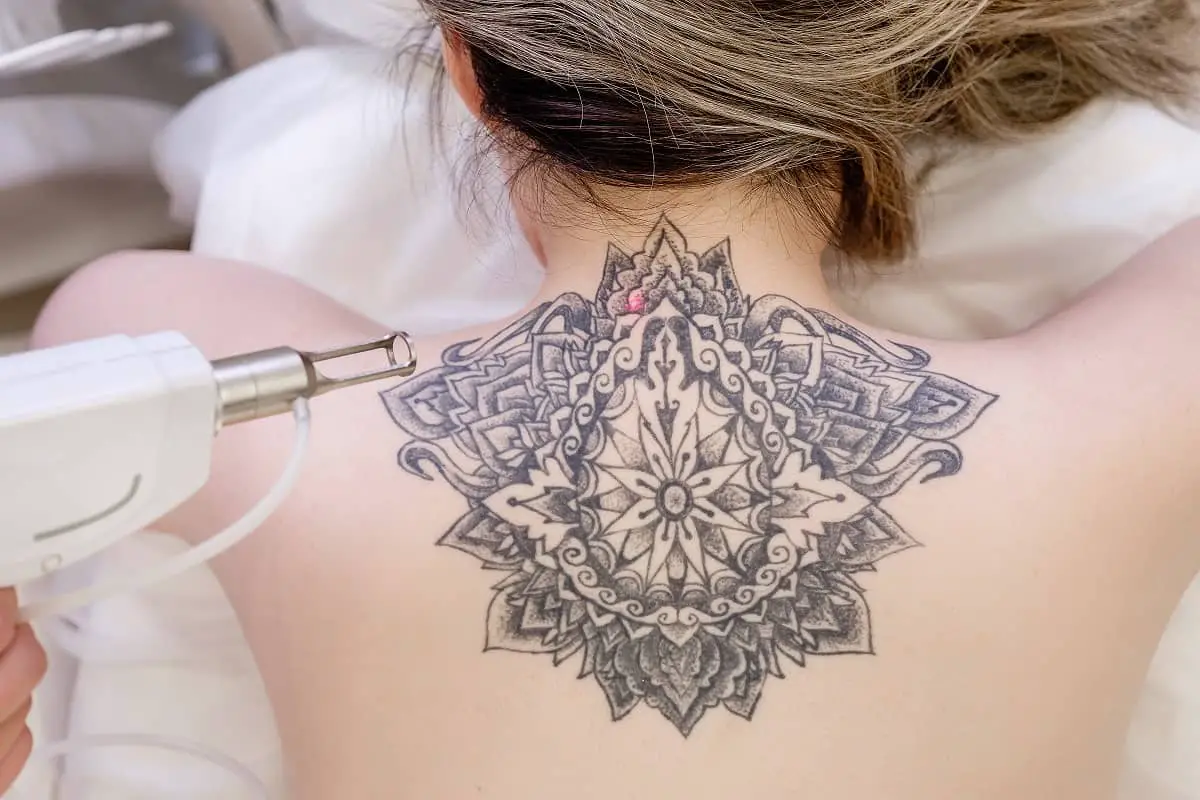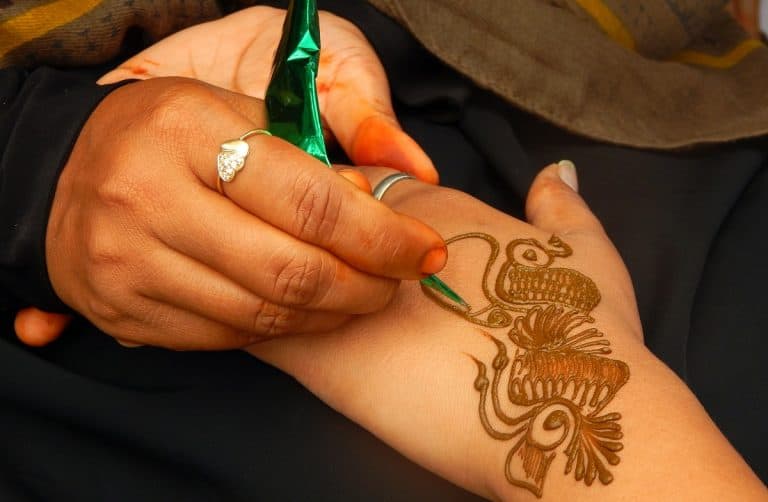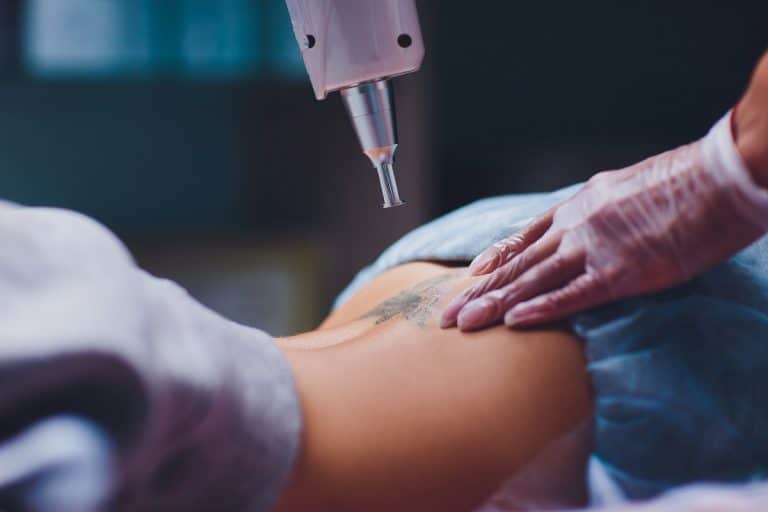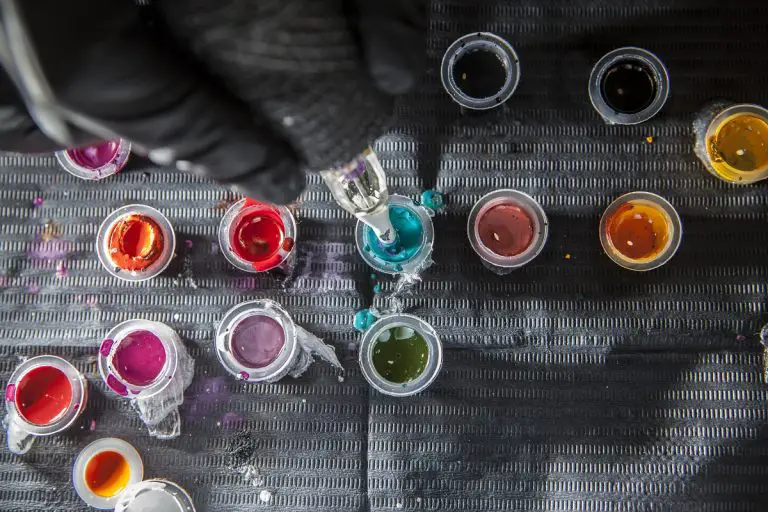How To Fade a Tattoo: Effective Methods + How To Do It
There is one thing no one tells you about getting a tattoo; you may not like it. The post-tattoo regret is as real as it gets, and many people have experienced it. The final results sometimes do not meet your initial design and appearance expectations. So, you’re left with a bad tattoo and there isn’t much you can do about it. As we see it, you have three options;
- Option no1 – live with the bad tattoo, embrace it, and hope your following tattoos will be better and compensate for the bad tattoo
- Option no2 – undergo laser tattoo removal, which is generally expensive, time-consuming, and painful
- Option no3 – lighten or fade the tattoo and try to cover it up with a new, better design
If you’re reading this, chances are you’re going for the third option. And, we’re here for it. Covering up a tattoo with a new one is a generally successful process when done by professionals of course. But, in order to get a new design, you might need to lighten or fade your current tattoo.
So, if you’re in need of some useful DIY tips on fading a tattoo naturally and painlessly, you’re in the right place. In the following paragraphs we’ll explore all of your options, so let’s get started!
Tattoo Fading Naturally: Effective Methods + How To Do It
Exposure To The Sunlight
Now, this is a debatable option. The reason we’re not recommended to expose our skin to the sun without proper protection, i.e. sunscreen, is because sunlight equals harmful UV rays. These rays can promote the development of skin cancer, premature skin aging, and overall skin damage due to sunburns.
Moreover, people with tattoos are specifically advised to wear sunscreen to protect their tattoos as well. Under sunlight and sun exposure, tattoos begin to fade prematurely, which is generally a big issue (in case you like your tattoos).
So, what can you do? What we would recommend is the following;
- Do not apply sunscreen onto the tattoo if you want it to fade naturally and quickly. However, the remaining exposed skin needs to be protected. So, make sure to apply sunscreen all over the rest of the exposed skin, skipping the tattooed area. But, make sure not to stay exposed to the sun for too long; you do not want to burn and cause further skin damage.
Note: Exposure to sunlight will visibly fade black tattoos. Such fading might be more difficult with tattoos done using yellow, green, or purple ink.
Also Read: When Can I Put Sunscreen on My Tattoo?
Using Lemon Juice
Lemons, or lemon juice, are known to be natural lightening agents, suitable for use on the skin. Some cultures even use lemon juice to fix skin pigmentation issues or to lighten their skin. Even though this practice might be problematic in regards to race issues, it is still suitable for the event of tattoo lightening.
The bleaching effect of lemon juice in regards to tattoos is, however, just anecdotal. Some use lime juice as well or add glycolic acid and hydrogen peroxide to improve the effects, but we are not sure about the effectiveness nor safety of these products.
So, what can you do? Here’s the safest way to use lemon juice in tattoo lightening;
Use lemon or lime and squeeze the juice. Apply the freshly squeezed juice onto the tattoo 2 to 3 times per day. Continue doing this for up to a month and you should see light fading of the tattoo. Unfortunately, this method is most efficient in black tattoos, where the tattoos turn light brown. The method will surely be less efficient in yellow, green, and blue tattoos.
Turning To Sugar Scrubs and Hydrogen Peroxide
Exfoliation is generally known as highly effective in removing dead skin cells and excess skin as well. Many argue that exfoliation can also be effective for natural tattoo fading. However, on their own, sugar or salt scrubs can’t really do much since they do no penetrate into the skin layer, or dermis to be more specific.
So, what’s the best way to utilize sugar or salt scrubs.
Well, the best method is to first exfoliate the skin with a body srub, leaving it clean and distraction-free. Try to exfoliate for at least 5 to 10 minutes, without being too harsh on the skin; let the sugar/salt do its thing. Then, one should apply a dab of hydrogen peroxide onto the tattoo with a cotton swab.
Sure enough, you won’t be seeing any results right away. This method requires repetition for at least a month. Try not to over scrub your skin during that period, because it might be counterproductive. You might damage the skin too much and cause serious irritation. You might also strip the skin of its natural barrier and even draw blood.
Turning To Professionals
Now, turning to professionals is always the best method to lighten a tattoo. Professionals are called that for a reason; they are educated and have the required experience that will provide results and not cause damage or harm to your skin. So, our recommendation is; make an appointment at the local professional tattoo removal center.
There, your tattoo will be examined, as well as your skin. Then, the removal methods used to fade the tattoo will actually reach the ink in the dermis of the skin. Moreover, they won’t cause any allergic reactions, skin damage, or scarring (like the previous methods might do).
The previous methods aren’t effective for everyone. Plus, they do not reach the inner skin layers where the ink is actually placed. So, the effectiveness is further diminished. So, the best thing you can do is talk to a professional and get your tattoo lightened properly, risk-free.
Here are some reasons why laser tattoo removal is the best way to properly fade a tattoo;
- It is quick, safe, and generally fast
- It utilizes your own immune system to get rid of the ink
- It only takes up to 5 sessions, since you’re only fading the tattoo, not removing it completely
- It will make it easier for the tattoo artist to create a new, cover-up tattoo because there is no skin damage
Other Things That Might Cause Tattoo Fading (But Are Not Recommended)
You may not be aware of the following causes of tattoo fading, but they do cause premature tattoo fading. Even though they’re not recommended as a tattoo lightening method, they most certainly should be avoided if you don’t want your tattoo to fade away sooner than it naturally might.
- Tanning – tanning beds should be avoided at all costs. They have a higher concentration of UV rays compared to the actual sunlight. As a result, they can promote faster skin cancer development. Tanning beds also promote faster and uneven tattoo fading.
- Friction – if your tattoo is placed in a high-friction area on the body, chances are it will start fading on its own much faster than it usually would. High friction build-up leads to fading, in case of skin-to-skin or skin-to-fabric friction.
- Not following the aftercare routine – if you do not follow the recommended aftercare routine, your tattoo may not heal properly, meaning it will look faded and light even though it is fresh ink. Improper tattoo coloration is a huge deal, so unless you hate the tattoo, you should follow the aftercare routine and avoid potential issues, like infections.
- Smoking – as unhealthy as it is, smoking is also known for its harmful effects on the health of your skin. It causes significant skin changes, especially when it comes to pigmentation. Because smoking reduces collagen production, this can lead to loss of skin elasticity, and with it, loss of pigment. For people with tattoos, this can destroy the ink as well as its vibrant colors quite significantly.
So, Should You Go For a DIY Approach?
The aforementioned methods are not studied nor are they recommended by professionals. The only proven method is the laser removal one, which is done by experts with experience and thorough knowledge of the skin and the tattoos.
Other methods, however, are pretty anecdotal, and so is their efficiency. Not to mention that they can easily harm your skin and even cause bleeding. Excessive scrubbing and exfoliation can remove the outer skin layer, making it more sensitive and prone to irritation and infection. Plus, the skin damage might make the new tattooing process much more difficult and painful.
Final Thoughts
So, when it comes to tattoo fading, what we recommend is pretty clear; go see a professional and let them treat your tattoo properly and risk-free. Other methods may seem appealing because they’re cheap and use ingredients that everyone has in their pantry. However, in their raw form, they could be potentially harmful to your skin, especially if applied repetitively.
However, if you still want to go with a DIY approach, we recommend you see a dermatologist and let them at least evaluate your skin and its health. Talk to them about these methods and see which method is efficient but not too invasive and risky.
Also Read: Can I Make My Tattoo Look Darker? – Tattoo Darkening Options
- Safe, non-toxic plant-based temporary tattoos made with 100% high-definition printing for a realistic look without the pain
- Easy to apply and remove - just stick for 20 seconds then take off
- Set includes 5 sheets with 17 fun, delicate designs like hearts, cats, smiles, suns, moons, and more
- Waterproof and long-lasting - stays on up to 2 weeks of wear
- Fashionable for women, men, girls and boys
- Place on arm, wrist, neck, leg, finger, waist, foot and more
- Great for parties, birthdays, and showing your unique style









